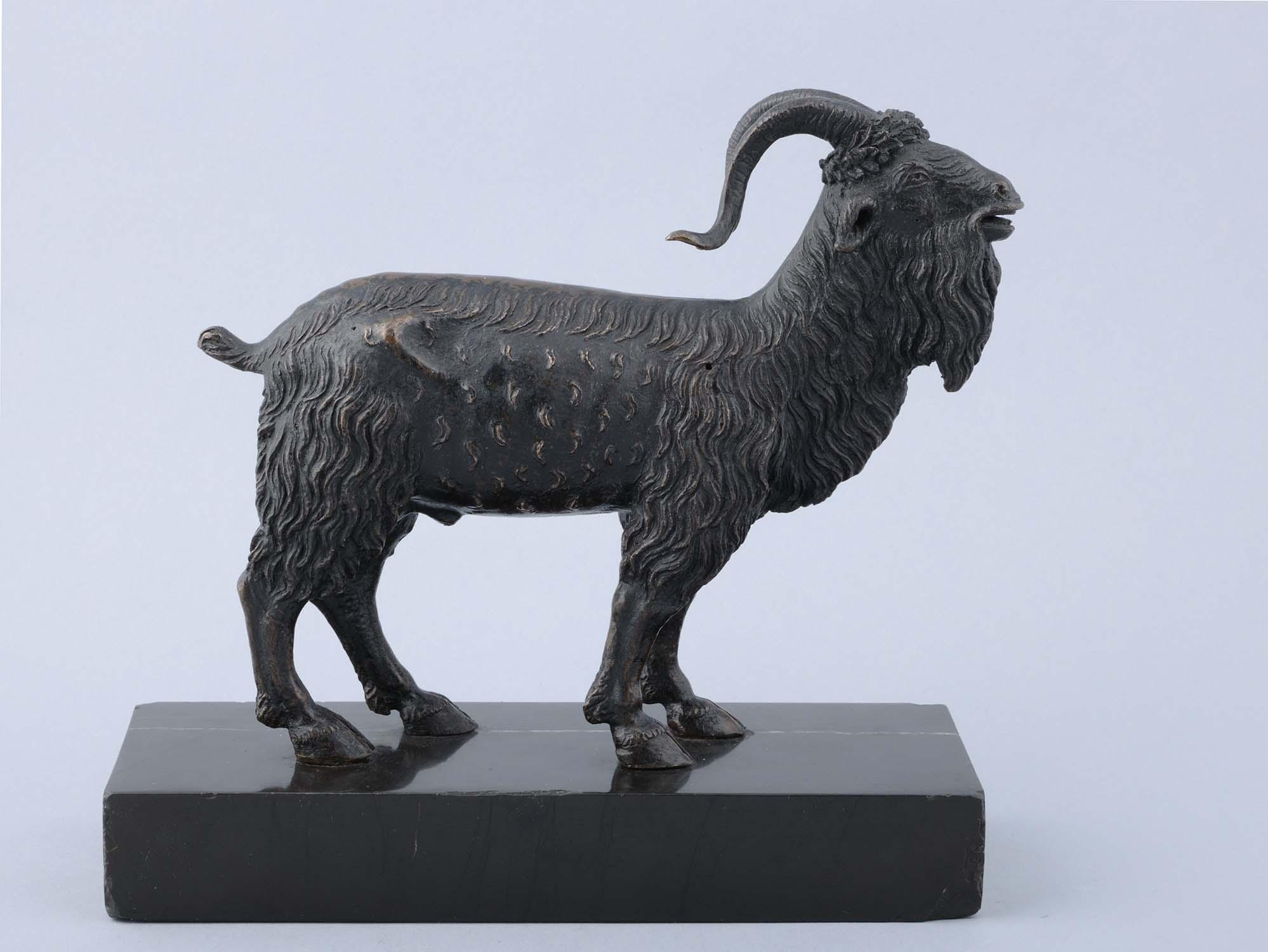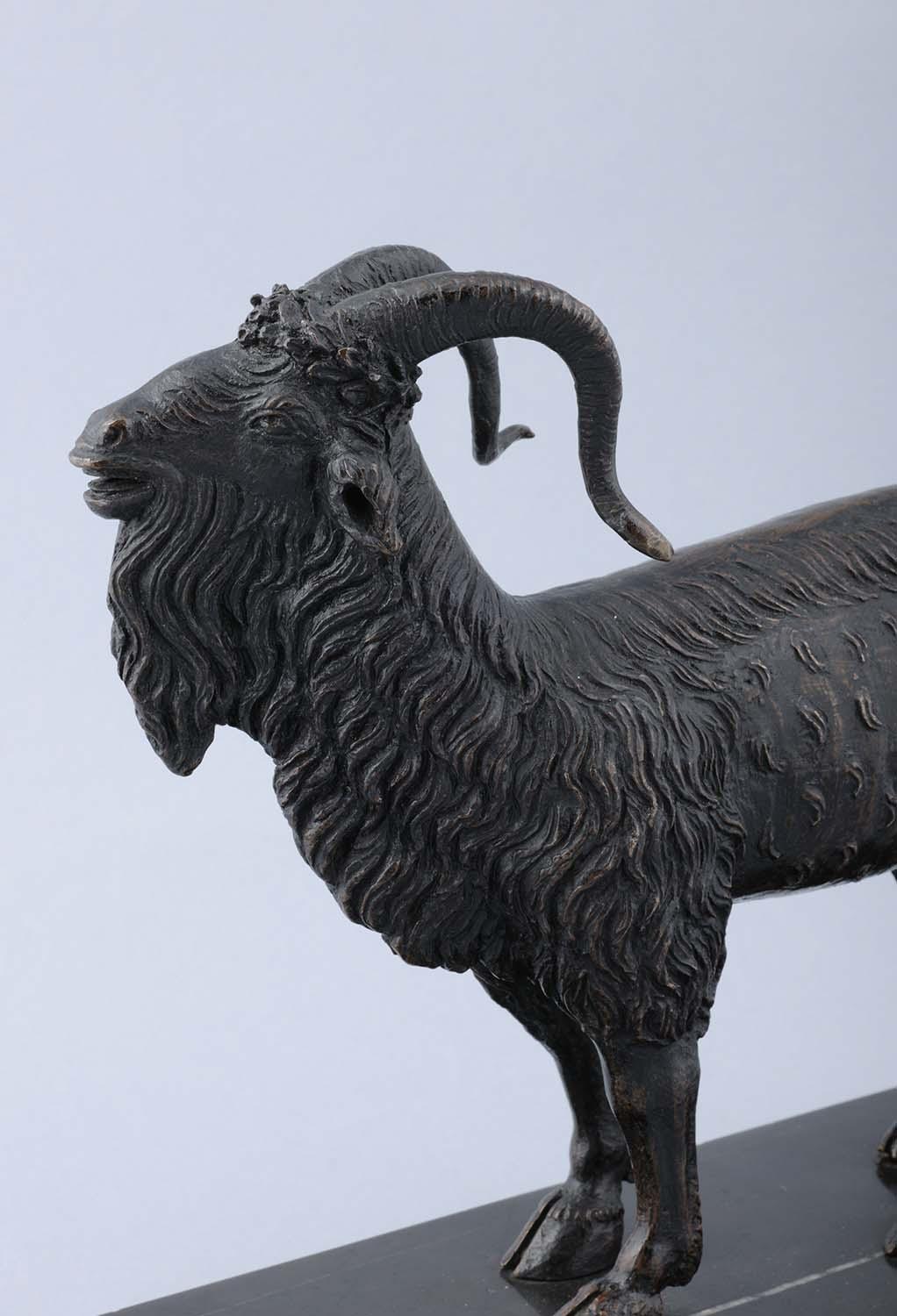The Billy Goat by il Riccio
The quintessentially Renaissance taste for bronze statuettes through the work of one of its stars
Palazzo Venezia holds a notable collection of small-scale bronze statues that range from the Renaissance to the end of the 18th century. This small bronze statue, exhibited in the Palazzetto, depicting a Billy Goat, represents a beautiful piece of work by Andrea Briosco, known as il Riccio (1470-1532), who probably made it in the second decade of the sixteenth century.
Like other sculptors working with bronze in Padua at the time, animals were often his subject matter. For this piece, the artist potentially was referring to Greco-Roman figurative or literary heritage: the billy goat is a recurring element in Dionysian mythology, as reported by Herodotus, Euripides and even Horace. However, there is no reason to exclude an alternative or parallel reference to the Old Testament: the sheared body, except for a few locks of wool on its pelt, and the presence of a laurel branch between its horns could allude to the annual rite of sacrifice that Moses ordered the Israelites to adopt.
The Billy Goat was part of the large collection of small bronze statues once owned by the Roman art dealer Alfredo Barsanti: as such, it was transferred to Palazzo Venezia in 1934.












